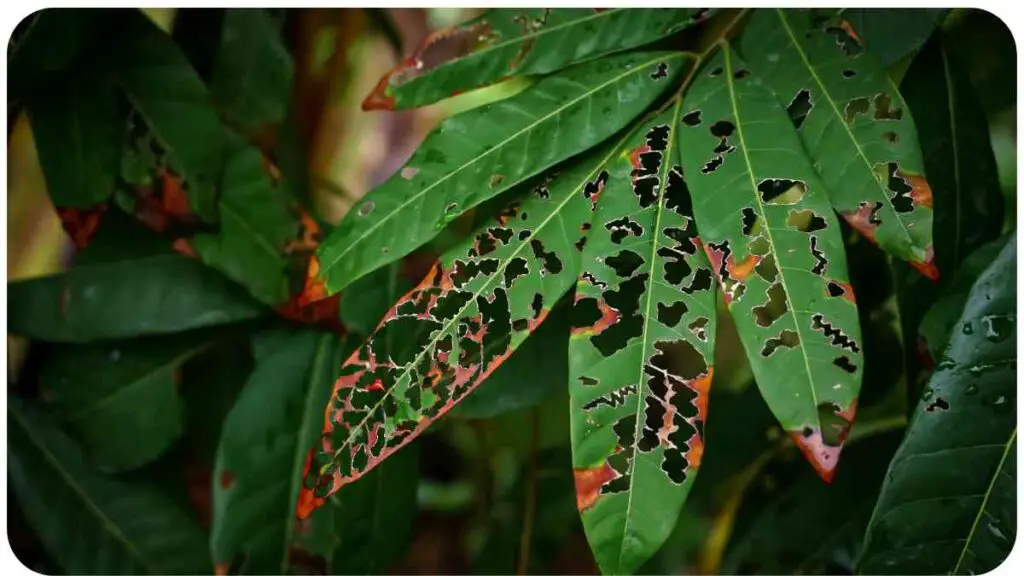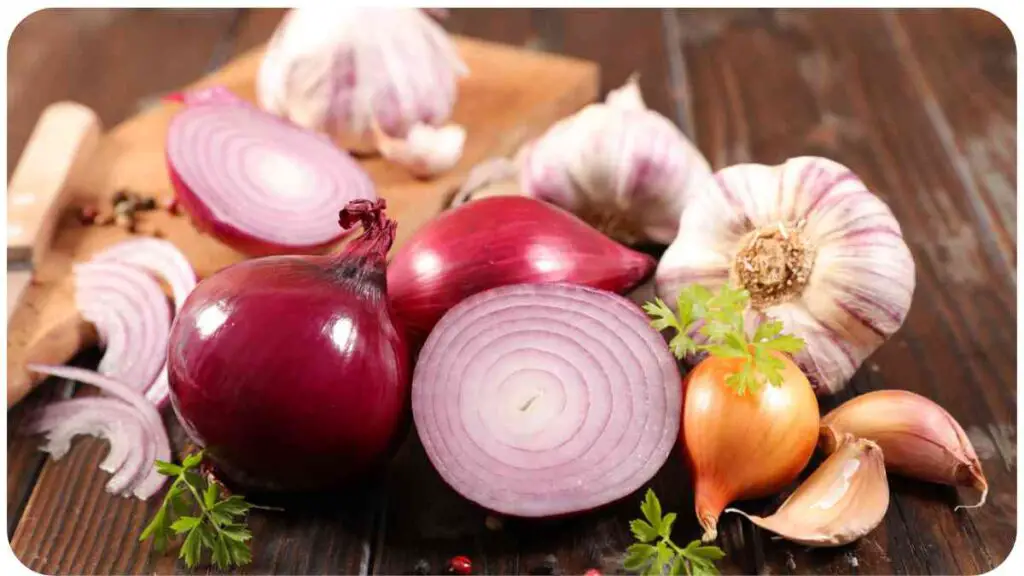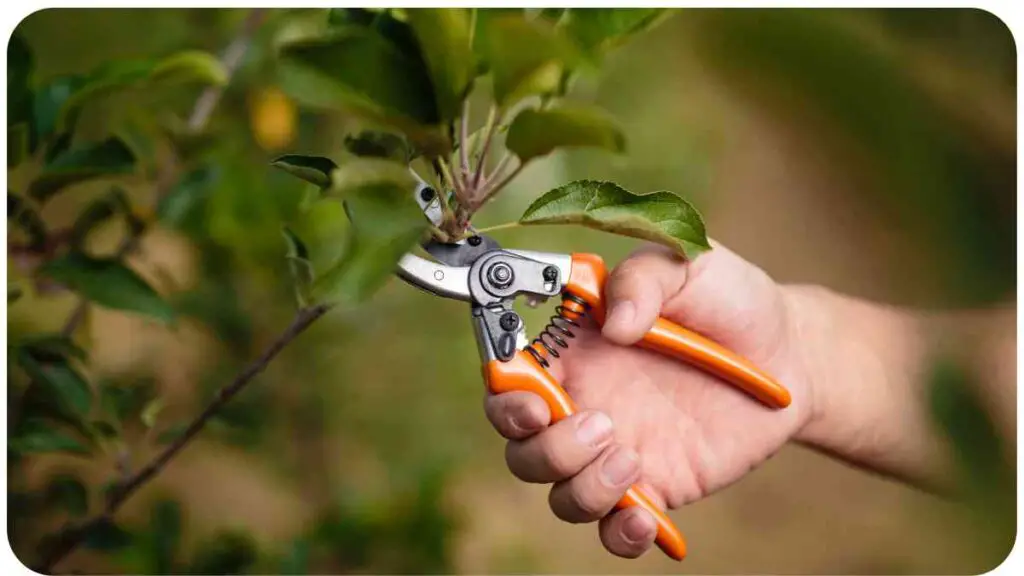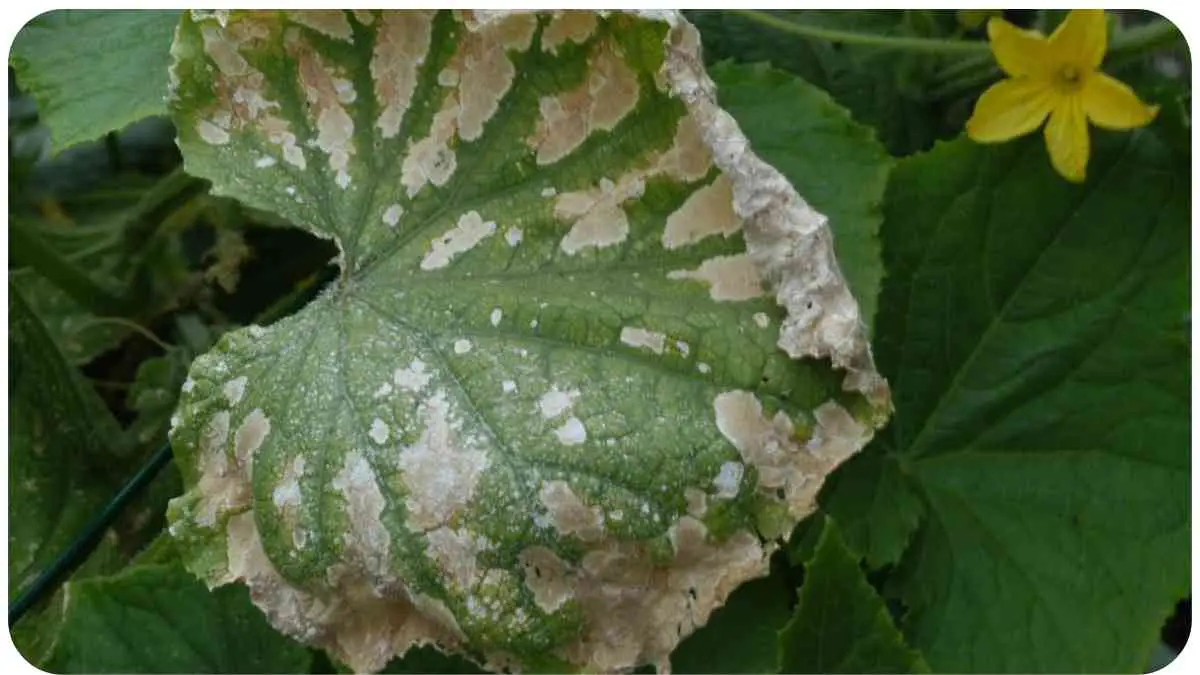Imagine walking into your garden, expecting to see vibrant, healthy plants, only to find them withering away due to pesticide burn. It’s a gardener’s nightmare. But fear not, for in this article, we will explore the world of organic remedies that can rescue your precious garden.
As a seasoned gardener with years of experience, I understand the frustration of dealing with pesticide damage. I’ve been there, faced the challenges, and learned valuable lessons along the way. Join me on this journey as we delve into the art of nurturing your garden back to health while incorporating my expertise and personal insights.
| Key Takeaways |
|---|
| – Combat pesticide burn in your garden by adopting |
| organic remedies. |
| – Recognize the signs of pesticide burn early to |
| prevent further damage. |
| – Choose organic solutions for a sustainable and |
| eco-friendly approach. |
| – Essential tools and ingredients are crucial for |
| effective pesticide burn recovery. |
| – Homemade remedies like neem oil spray and |
| garlic-onion mix can work wonders. |
| – Explore trusted store-bought organic brands for |
| convenient solutions. |
| – Prevent future pesticide burn with companion |
| planting and beneficial insects. |
| – Soil health maintenance and proper pruning are |
| essential for garden recovery. |
| – Consistent monitoring and inspections are your |
| best defense against pesticide burn. |
| – With dedication and knowledge, your garden can |
| thrive once again. |
Understanding Pesticide Burn
Pesticide burn occurs when chemicals, whether synthetic or natural, harm your plants. These chemicals can disrupt the plant’s natural growth processes, leading to discoloration, wilting, and even death. But don’t let despair set in; there are solutions!
When facing garden troubles, like pesticide burn, consider using coffee grounds. They can be an effective organic remedy to revive your plants naturally
Signs of Pesticide Burn

Before we dive into remedies, it’s crucial to identify pesticide burn’s telltale signs. These may include yellowing leaves, browning edges, stunted growth, and overall plant distress. Recognizing these symptoms early can save your garden from further damage.
Table 1: Signs of Pesticide Burn
| Sign | Description |
| Yellowing Leaves | Loss of chlorophyll, leading to yellow foliage. |
| Browning Edges | Leaf margins turning brown due to stress. |
| Stunted Growth | Impaired development resulting in small plants. |
| Overall Distress | A general decline in the plant’s well-being. |
The Impact on Your Garden
Pesticide burn not only harms individual plants but can also disrupt your garden’s ecosystem. Beneficial insects may be affected, soil health can deteriorate, and the balance of your garden can be thrown off-kilter.
Wondering if edible flowers are healthy? Discover expert advice on the benefits of these blooms for both your garden and your plate.
Why Choose Organic Remedies?
In my extensive gardening journey, I’ve found that organic remedies offer a holistic and sustainable approach. They are safer for the environment, preserve beneficial insects, and ensure long-term soil health. Plus, they’re readily available and cost-effective.
Essential Tools and Ingredients

Before we dive into specific remedies, let’s gather our arsenal of tools and ingredients. You’ll need a few key items to effectively combat pesticide burn in your garden. Here’s a list:
Table 2: Essential Tools and Ingredients
| Item | Purpose |
| Spray Bottle | To apply remedies evenly. |
| Neem Oil | A versatile organic pesticide. |
| Baking Soda | For fungal issues caused by pesticides. |
| Garlic and Onions | Natural insect repellents. |
| Organic Pest Control Brand | A convenient option for busy gardeners. |
| Natural Garden Solutions Brand | Another trusted choice for organic solutions. |
Homemade Remedies
Now that we have our essential tools and ingredients ready, let’s explore some homemade remedies that have proven effective in rescuing gardens from pesticide burn.
Curious about thistle flowers? Explore the world of thistles and learn whether a thistle flower exists in this informative guide
Neem Oil Spray
Neem oil is a versatile organic pesticide that can combat a wide range of garden pests while being gentle on your plants. To make a neem oil spray:
Table 3: Neem Oil Spray Recipe
| Ingredients | Purpose |
| 1 tablespoon Neem Oil | Pest control and prevention. |
| 1 teaspoon Liquid Soap | Helps the oil mix with water. |
| 1 quart of Water | Dilutes the neem oil for safe application. |
Mix these ingredients in your spray bottle and apply to affected plants. This solution not only tackles pests but also helps in preventing future infestations.
Baking Soda Solution
Pesticides can sometimes lead to fungal issues on your plants. A simple baking soda solution can help combat these problems:
Table 4: Baking Soda Solution Recipe
| Ingredients | Purpose |
| 1 tablespoon Baking Soda | Fights fungal issues. |
| 1 quart of Water | Dilutes the baking soda for safe use. |
Mix and spray this solution on the affected areas. Baking soda acts as a natural fungicide and can save your plants from further harm.
Garlic and Onion Mix

Garlic and onions are natural insect repellents that can help protect your garden from pests:
Table 5: Garlic and Onion Mix Recipe
| Ingredients | Purpose |
| 4 cloves Garlic | Acts as a natural insect repellent. |
| 1 Onion | Adds an extra layer of protection. |
| 1 quart of Water | Dilutes the mixture for safe application. |
Blend the garlic and onion with water, strain the mixture, and then spray it on your plants. This pungent concoction will deter pests while being completely safe for your garden.
Is your garden suffering from fertilizer overload? Find out the signs and solutions for gardenias to ensure your plants thrive
Store-Bought Organic Alternatives
While homemade remedies are effective, sometimes you may prefer the convenience of store-bought solutions. Here, I’ll introduce you to two trusted organic brands that offer effective remedies for pesticide burn.
Burt’s Bees: Burt’s Bees is well-known for its natural and organic skincare products. They offer a range of products, including creams and balms, which can help soothe and heal pesticide burns. Look for their products containing ingredients like aloe vera, calendula, and chamomile, which are known for their soothing properties.
EcoRaider: EcoRaider specializes in organic and non-toxic pest control solutions. While they primarily focus on pest repellents, they also offer products that can provide relief from pesticide burns. Their organic ointments and creams often contain botanical extracts and natural ingredients that can help alleviate skin irritation caused by pesticides.
These brands have been trusted by many gardeners, including myself, and can be a valuable addition to your garden care toolkit.
9. Preventing Future Pesticide Burn
As we’ve discussed various remedies, it’s equally important to focus on prevention. After all, prevention is often the best cure. Here are some preventive measures to safeguard your garden:
- Implementing Companion Planting: Certain plants repel pests or attract beneficial insects. For instance, marigolds can deter aphids, and basil can attract pollinators.
- The Power of Beneficial Insects: Encourage ladybugs, lacewings, and other beneficial insects that naturally control pests.
- Maintaining Soil Health: Healthy soil supports robust plant growth and makes them less susceptible to pests and diseases. Add compost and organic matter regularly.
- The Art of Pruning: Remove affected leaves or branches promptly to prevent the spread of damage.
- Monitoring and Regular Inspections: Keep a close eye on your garden. Early detection and intervention can prevent pesticide burn from spreading.
By incorporating these preventive strategies into your gardening routine, you can minimize the risk of future pesticide burn incidents.
Struggling with brown leaves on your Monstera? Dive into this comprehensive guide on troubleshooting and revive your indoor greenery.
Implementing Companion Planting
Companion planting is a fascinating gardening technique that involves strategically placing plants next to each other to enhance growth and deter pests. It’s a technique that has served me well over the years, and I’m excited to share some insights.
Table 8: Companion Planting Combinations
| Companion Plants | Benefits |
| Tomatoes and Basil | Basil repels aphids and enhances tomato flavor. |
| Marigolds and Roses | Marigolds deter aphids and attract pollinators. |
| Nasturtiums and Cucumbers | Nasturtiums repel cucumber beetles. |
| Carrots and Onions | Onions deter carrot flies and vice versa. |
Experiment with these combinations in your garden, and you’ll not only deter pests but also improve the overall health and vigor of your plants.
The Power of Beneficial Insects
Beneficial insects are your garden’s unsung heroes. They play a crucial role in maintaining a natural balance by preying on garden pests. Here are a few of my favorite garden allies:
Table 9: Beneficial Insects and Their Prey
| Beneficial Insect | Prey |
| Ladybugs | Aphids, mealybugs, and spider mites. |
| Lacewings | Aphids, caterpillars, and scale insects. |
| Praying Mantises | A wide range of garden pests. |
| Hoverflies | Aphids, thrips, and caterpillars. |
Attract these beneficial insects to your garden by planting flowers like dill, fennel, and yarrow. By doing so, you’ll have natural pest control agents working tirelessly on your behalf.
Maintaining Soil Health
Healthy soil is the foundation of a thriving garden. When your soil is rich in nutrients and teeming with beneficial microorganisms, your plants become more resilient to pesticide burn and other issues.
Table 10: Soil Health Tips
| Soil Health Practice | Benefits |
| Composting | Adds essential nutrients to the soil. |
| Mulching | Retains moisture and deters weeds. |
| Crop Rotation | Prevents soil depletion and pests. |
Regularly amending your soil with compost, applying mulch, and practicing crop rotation are all steps toward maintaining soil health.
The Art of Pruning

Pruning is an often-overlooked aspect of garden care, but it plays a vital role in promoting plant health and preventing the spread of pesticide burn. Here are some tips on the art of pruning:
Table 11: Pruning Tips
| Pruning Technique | Purpose |
| Remove Affected Leaves | Prevents the spread of pesticide damage. |
| Shape and Size Control | Helps maintain the plant’s desired form. |
| Deadheading Flowers | Encourages new blooms and healthy growth. |
| Thin Dense Growth | Increases air circulation, reducing disease risk. |
Proper pruning not only rejuvenates your plants but also ensures that the resources are directed towards healthy growth, which can be especially helpful after a pesticide burn incident.
Monitoring and Regular Inspections
To truly excel in gardening, consistent monitoring and inspections are essential. Make it a habit to walk through your garden regularly, inspecting each plant for signs of trouble. This proactive approach can catch issues before they become severe.
Table 12: Monitoring Checklist
| Inspection Item | Purpose |
| Leaf Quality | Check for discoloration, wilting, or spots. |
| Insect Activity | Look for pests or beneficial insects. |
| Soil Moisture | Ensure adequate water levels. |
| Overall Health | Assess the general well-being of the garden. |
By staying vigilant and addressing problems promptly, you can prevent pesticide burn from becoming a recurring nightmare in your garden.
Conclusion
In your journey to rescue your garden from pesticide burn, you’ve learned the importance of organic remedies, companion planting, beneficial insects, soil health, pruning, and vigilant monitoring. Armed with these tools and knowledge, you’re well-equipped to protect your garden and ensure it thrives.
Remember, every gardener faces challenges, but it’s the wisdom gained from experience that leads to success. With patience and dedication, your garden will once again flourish, thanks to your newfound expertise in overcoming pesticide burn with organic remedies.
Happy gardening! 🌱
Further Reading
Here are some additional resources to deepen your understanding of combating garden pests naturally:
- “Combat Garden Pests Naturally”
- Explore comprehensive tips and strategies for naturally managing garden pests with insights from the Farmer’s Almanac.
- “How to Make Organic Pesticide”
- WikiHow provides step-by-step instructions on creating your own organic pesticide solutions to protect your garden.
- “Integrated Pest Management for Home Gardens”
- The University of California Division of Agriculture and Natural Resources delves into integrated pest management techniques for home gardeners.
FAQs
How can I identify pesticide burn in my garden?
Pesticide burn often manifests as yellowing leaves, browning edges, stunted growth, and overall plant distress. Regular inspections can help detect these signs.
What are the benefits of using organic remedies over synthetic pesticides?
Organic remedies are safer for the environment, preserve beneficial insects, and promote long-term soil health, ensuring the sustainability of your garden.
Can companion planting really deter pests effectively?
Yes, certain plant combinations can deter pests. For example, planting marigolds near tomatoes can help deter aphids and enhance tomato flavor.
What are the key practices for maintaining soil health?
Maintaining soil health involves composting, mulching, and practicing crop rotation to ensure your soil remains nutrient-rich and pest-resistant.
How often should I inspect my garden for potential issues?
Regular monitoring is essential. Inspect your garden at least once a week to catch and address problems before they become severe.

I am Hellen James, a landscape architect. For many years I have written about landscaping for various publications; however, recently decided to focus my writing on personal experience as a profession.

